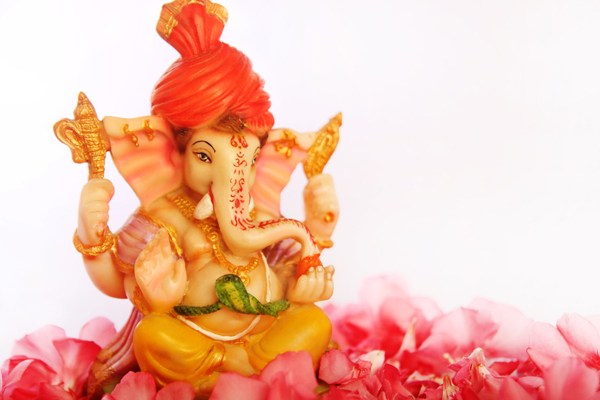By- Md. Mojahid Raza
Bhubaneswar: Ganesh Chaturthi, popularly called ‘Ganesh Puja’ or ‘Vinayak Chaturthi’ is a Hindu festival which falls in the vedic month of Bhadra (mid August-September). It is associated with Lord Ganpati or Ganesha- the most loved god who has 108 names. He is considered to be a bestower of good fortune, wisdom, knowledge, prosperity and wealth. Ganpati ji is also called ‘Vighnaharta’ as he is known to take away all the problems of his devotees.

Ganesh Puja marks the occasion when Lord Ganesha leaves his abode on Mount Kailash to visit the homes of devotees and bless them with good luck and happiness all year round. This festival is celebrated with extreme devotion and religious fervour in many states of India like Maharashtra, Odisha, Gujarat, Goa, Kerala, Tamil Nadu and even outside the country.
The history of Ganpati Utsav is intrinsically linked to the birth of Lord Ganesha. As per Hindu mythology, goddess Parvati used her sandalwood paste and created Ganesha in the absence of Shiva. After this, she assigned him the task of guarding her bathroom door. When Shiva returned home, Ganesha and Shiva got into a tiff when the former did not allow Shiva to enter home. In a fit of anger, Lord Shiva severed the head of Ganesha.
Parvati became distraught on seeing this and pleaded Shiva to bring him back to life. Shiv ji then directed his followers to search for a child who was sleeping with his head facing northwards. But they could only find an elephant’s head. Hence, the baby elephant’s head was attached to the body of Ganesha and he became ‘Gajanan’ or ‘Elephant God’.

The festival is celebrated by keeping the idol of Lord Ganesha at home for 10 days during which he is worshipped with love and devotion. The festivities conclude on the 10th day or ‘Visarjan’ when Ganesha returns to his parents- Lord Shiva and Goddess Parvati on Mount Kailash.
Preparations for Ganesh Puja kickstart in every home weeks in advance. Beautiful idols of various shapes, sizes and postures are made by scupltors and artisans. These idols are then installed at decorated pandals in homes and localities. The idol is installed after a special ritual called ‘Pranapratishhtha’ during which priests chant special mantras marking the arrival of Lord Ganpati. During the next 10 days, Ganesha is worshipped in 16 different ways known as ‘Shhodashopachara’. Offerings of his favourite sweets- laddoo and modaks are also made during this period.



On the 11th day, a ritual called ‘Uttarpuja’ is observed with reverence after which Lord Ganesha is given farewell. Devotees immerse the idols in water during ‘Ganpati Visarjan’ amid chants of Ganpati Bappa Morya, marking the end of the festivities.

Apart from being an auspicious religious festival, Ganesh Chaturthi has deep cultural significance too. It is a time for various colourful activities like singing, dancing and performing plays depicting the birth of Ganesha and enactment of the various legends associated with him. Families, localities and communities come together to celebrate this festival with pomp, grandeur and fanfare.
Besides, Ganesh Chaturthi is also considered an auspicious occasion for starting new business ventures and taking up of new activities. The mere name of Lord Ganesha is said to invoke good luck and activities like inauguration of new shops, businesses are undertaken on this day.
Also Read: Ramveer Kashyap: Who Takes Care Of A Mosque He Saved In 2013 Muzaffarnagar Riots




 Ms Kalinga
Ms Kalinga